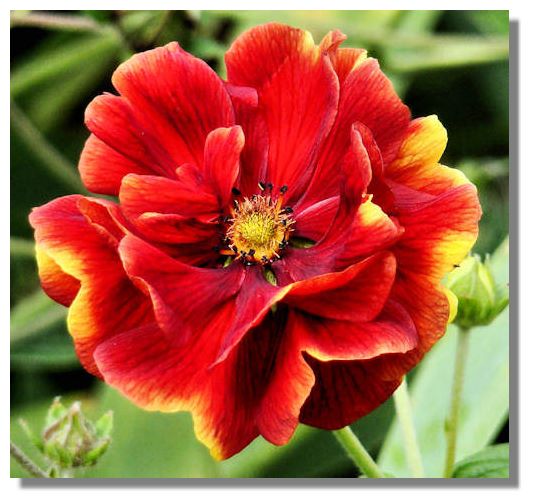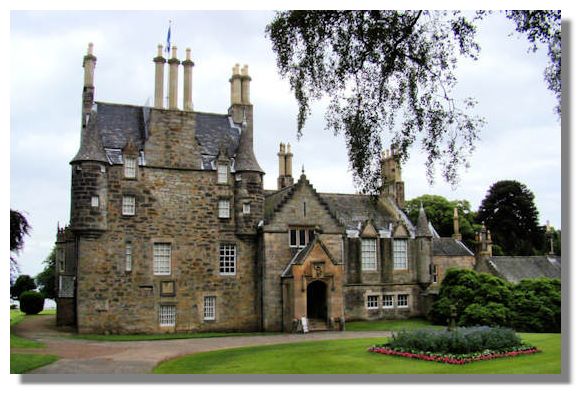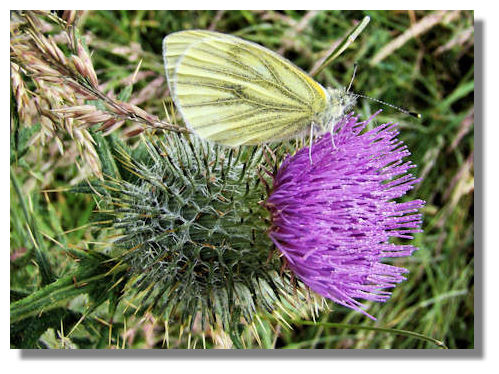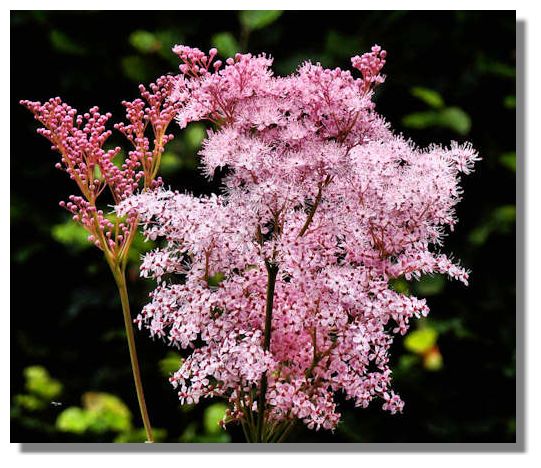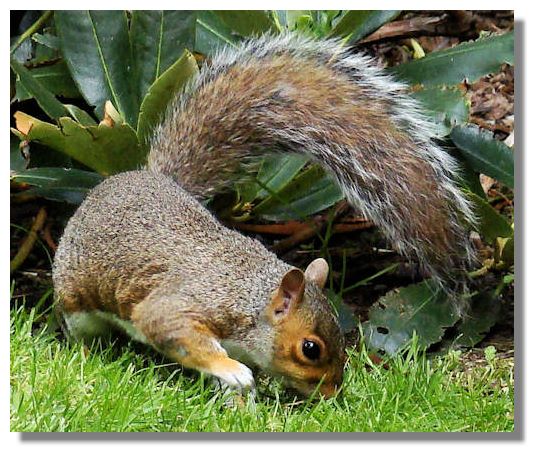The Rampant Scotland Newsletter includes a number of photographs which illustrate the weather and the seasons, plus the flora and fauna of the current week around Scotland. This separate "colour supplement" displays some more pictures, in a larger format. Here is this week's crop of Scottish views!
Potentilla usually come in shades of yellow or orange, with a few pink or red, but "Gloire de Nancy" produces these double reddish orange flowers with gold tips. Common names for potentilla include cinquefoil, five-fingers, tormentil, and barren strawberry. It's often hard to know the precise variety of flowers found growing in gardens, but this one (and a number of others on this page) were photographed at the Royal Botanic Gardens in Edinburgh - where many of the plants have informative labels.
Lauriston Castle was started as a 13th century stronghold by the Napiers of Merchiston, west of Edinburgh, but it was considerably altered in the 16th century and then extended further in the 19th century to create a Jacobean-style mansion. One of the family, John Napier, was the inventor of logarithms. It now belongs to the City of Edinburgh as a public park. The sound of ghostly feet have reportedly been heard in the building....
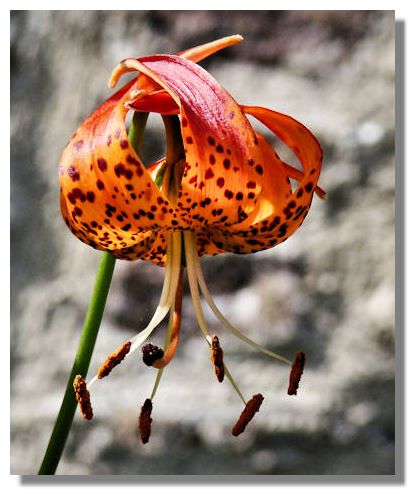
The orange flowers with purple spots and that distinctive shape are typical of the "Turk's Cap" lily. The flowers reach a height of about four feet, with large numbers of flowers on each stem, making a striking display.
There has been a notable lack of butterflies this year - the 40th anniversary year of the Butterfly Conservation Society. The only ones I have seen in any numbers have been the so-called "Small Whites". The Green-Veined White (seen here) can usually only be identified when it is at rest from its dfistinctive under-wing markings.
These fluffy clusters of tiny flowers on the top of tall (over six feet) stems are Eupatorium, a popular plant in large gardens but usually too big for suburban plots. This example had plenty of space - at the back of a 540 feet long herbaceous border at the Royal Botanic Garden, Edinburgh. Eupatorium is a native of eastern USA and Eurasia.
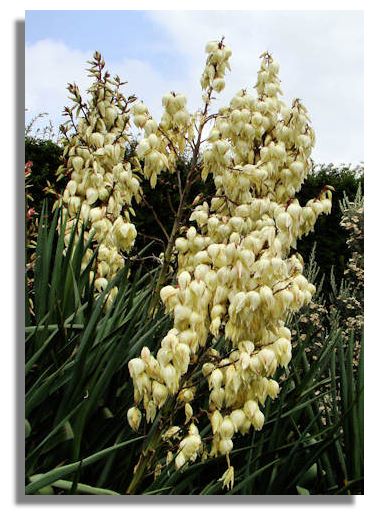
Yucca, with its long, sword-like leaves and exotic-looking flower stems which grow to 2½ feet long, look as if they would be more suitable for sunnier climates. Although originating in southern USA and Central America, there are hardy varieties which do well - such as this one here in the Royal Botanic Garden, Edinburgh.
It's sad that efforts to conserve the native red squirrel in the UK has led to a vendetta against the imported grey squirrel, which is sometimes looked upon as "vermin". The greys were imported last century from North America and proved to be more successful than the native variety. They are bolder and more resourceful and with a larger reserve of body fat, can better survive our winters.If you want to look back at earlier editions of this Colour Supplement, there is an Index Page
